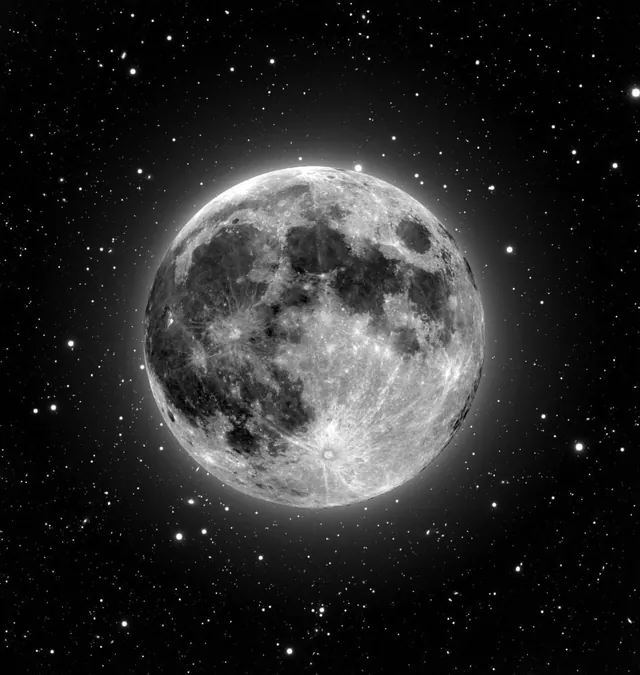
Unlocking the Secrets of Exoplanet Magnetic Fields from the Moon!
2025-08-18
Author: Rajesh
A New Frontier in Exoplanet Research!
When it comes to determining whether exoplanets can support life, several critical factors come into play, with liquid water leading the pack. But that’s just the tip of the iceberg! A stable atmosphere, the right chemical makeup, and geologic activity are also essential elements. Among these, planetary magnetic fields are vital—but how can we detect them from Earth?
Earth's Barriers: A Challenge for Astronomers
The culprit is Earth's ionosphere. This layer blocks certain radio frequencies, particularly those below 10 MHz, which are considered the most promising for detecting signals from exoplanet atmospheres. So how do we overcome this obstacle?
The Moon: A Perfect Observatory?
Enter the Moon! With no ionosphere of its own, lunar radio arrays may hold the key to studying the magnetic fields of distant worlds. According to a groundbreaking paper led by Dr. Jake Turner from Cornell University, a radio array on the Moon could revolutionize our understanding of exoplanets.
Ionosphere: Earth's Radio Blockade
Earth’s ionosphere is composed of charged atoms and layers of varying ion density, creating a complex barrier to radio signals. Stretching from about 48 kilometers (30 miles) above to 965 kilometers (600 miles) into space, this region impacts our ability to probe exoplanets.
Unlocking New Discoveries on the Lunar Surface!
Unlike Earth, the Moon lacks a substantial atmosphere; its ultra-thin exosphere is composed of sparse molecules held by its gravitational pull. This distinctive feature makes the Moon an unrivaled platform for astronomical research.
The Hints Are There!
Despite extensive searches, conclusive detection of an exoplanet's magnetic field remains elusive. However, Turner and his team have detected tantalizing clues of a magnetosphere around the exoplanet Tau Bootis b, located about 51 light-years away.
A Promising Method: Planetary Auroras
Detecting exoplanet magnetic fields can be achieved by observing auroral emissions—radio waves generated by the electron-cyclotron maser instability (CMI). This method has already been successful for magnetized bodies in our Solar System, with signals attempt to reach us from much farther away.
Exciting Lunar Missions on the Horizon
There are already proposals in the pipeline to advance lunar radio astronomy. One of these missions, the Lunar Surface Electromagnetics Experiment (LuSEE-Night), is planned to launch by 2026, equipped to conduct radio observations from the Moon's far side, free from Earth's interference.
Future Technologies: FarView and FARSIDE
Imagine a setup comprising 100,000 dipole antennas covering 200 square km on the Moon—the proposed FarView Observatory! Its capabilities could allow for the detection of magnetic fields around diverse exoplanets, from Earth-sized worlds to massive gas giants. Then there’s FARSIDE (Farside Array for Radio Science Investigations), designed to investigate many nearby habitable exoplanets.
More Than Just Water: What Makes a Planet Habitable?
The habitable zone is often linked to a planet's distance from its star, but Earth teaches us that life requires more than just liquid water. Factors like magnetic shields and geological activity are equally crucial for supporting life.
A New Dawn for Understanding Exoplanets!
Thanks to initiatives like FarView and FARSIDE, we stand on the brink of a new era in exoplanetary science. Sensing these celestial bodies' magnetic fields may soon be within our reach, transforming our understanding of their potential for habitability. Get ready—exciting discoveries await!



 Brasil (PT)
Brasil (PT)
 Canada (EN)
Canada (EN)
 Chile (ES)
Chile (ES)
 Česko (CS)
Česko (CS)
 대한민국 (KO)
대한민국 (KO)
 España (ES)
España (ES)
 France (FR)
France (FR)
 Hong Kong (EN)
Hong Kong (EN)
 Italia (IT)
Italia (IT)
 日本 (JA)
日本 (JA)
 Magyarország (HU)
Magyarország (HU)
 Norge (NO)
Norge (NO)
 Polska (PL)
Polska (PL)
 Schweiz (DE)
Schweiz (DE)
 Singapore (EN)
Singapore (EN)
 Sverige (SV)
Sverige (SV)
 Suomi (FI)
Suomi (FI)
 Türkiye (TR)
Türkiye (TR)
 الإمارات العربية المتحدة (AR)
الإمارات العربية المتحدة (AR)